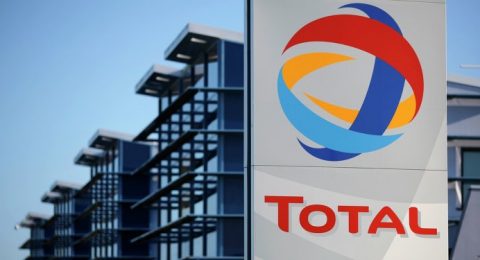Much fanfare, enthusiasm and hope greeted reforms in Nigeria’s power sector. A majority of the citizenry beamed with restrained optimism that, in no distant time, their electricity worries would ease off as government advertised an uncommon gusto to reforming the sector.
Dark, long and treacherous nights of epileptic power, it seemed, would be overtaken by light promised by new investors and anchored on the shoulders of the Nigerian Electricity Regulatory Commission (NERC), in a fashion reminiscent of the elixir worked on the telecommunications industry. It was a good strategy, or so it seemed.
Power generation as at December, 2009, stood at 3653MW, but structural reforms have dragged it to 4500MW late in 2014. The reforms came as the unbundling of the Federal Government-run power outfit, NEPA — later PHCN — into three arms of generation, transmission and distribution to private investors.
As Nigerians anticipate days when light bulbs stay on for 24 hours without interruption, the combined forces of pipeline vandals disrupting gas flow to power stations, accusations of politicising of siting of independent power stations, and a somewhat reluctance to embrace other energy options by government seem to indicate a long, tiring wait in the dark.
A document on the National Bureau of Statistics (NBS) website, reporting the state of the electricity sector, hinted on all that was bad and gloomy about the sector before the unbundling of assets, pinpointing, among other things, a most undesirable state of affairs. Titled Electricity Demand and Supply Statistics, it states that before the advent of hydro-generated electricity from the Kainji Power Station, electricity supply in country was largely by the thermal system.
“However,” it said, “the hydro system ushered in by Kainji in the early 1970s started giving way to the thermal dominated system again some years later. This was due to the perennial water-flow problem of the River Niger at Kainji, escalating costs of establishing hydro-plants and their long gestation lags.”
Highlighting the perennial culprits in the failed PHCN ‘adventure,’ it states: “A poorly-motivated workforce, vandalisation and theft of cables and other vital equipment, accidental destruction of distribution lines, illegal connections and resultant over-loading of distribution lines, are additional major problems of the PHCN. These have been responsible for unannounced load shedding, prolonged and intermittent outages, which many consumers of electricity have had to contend with over the years. The situation will change with the deregulation of the sub-sector.”
Yet, the so-called change, has been minimal, going by the fluctuations in power supply in the last month, especially as available generation capacity meets only marginal needs in Nigeria — Africa’s biggest and fastest growing economy.
Comparisons
Many experts argue that, compared to other countries and with its status in the African continent, Nigeria produces far too little power. Drawing parallel comparisons with the continent’s second largest economy, South-Africa, Nigeria scores abysmally low and should be doing better, they contend.
Recognising this deficit, the Minister of Power, Prof. Chinedu Nebo, said recently that close to $10bn (about N1.6 trillion) investment was needed to double the power generation capacity of the country.
“Nigeria needed over 300 billion dollars investment in the power sector for it to meet the power generation of South Africa,” he stressed.
The minister hinted that South Africa — Nigeria’s economic arch-rival — which was a little more than one-quarter of the population of Nigeria, was generating 10 times more power than Nigeria.
“The implication is that South Africa is generating per capita, 40 times what Nigeria is generating. If Nigeria were to be at par with South Africa we should be generating 160,000 megawatts, no doubt about that. We must note that if that were to happen in Nigeria, the minimum that government will need to put in place would be over US$300 billion and no government on earth can do that… Nigeria has to devote about 100 per cent of its annual budget to power alone and yet may not meet the target,’’ Nebo said.
Electricity Needs
However, there is still a bit of confusion on Nigeria’s exact energy need, that is, power required for the efficient running of the economy. The growth of the economy and a rising profile of foreign direct investments, most of which require copious, steady power have caused industry watchers headaches in efforts to determine where exactly the power need in Nigeria stands.
The dilemma is not insulated from government quarters as even the power minister has been quoted as providing disparate information on the matter. At one occasion, in London, Nebo said about 200,000MW is needed to meet current energy demands. Elsewhere, he said the country needs about 160,000MW to “reach the globally accepted standards and satisfy the demand for stable power supply for the 170 million Nigerians.”
He said although the current 4,500mw generated was an improvement, Nigeria’s minimum requirement is to be at par with South Africa and other global economic players.
There are also human capacity needs begging for attention. A struggling educational system has been implicated to be producing inarticulate engineers for the sector.
“We need young hands and people that are knowledgeable. We need to train more young people; electronic engineers, mechanical engineers, accountants, and energy economists, among others.
“If we look at the best global standard for energy consumption, we are going gradually. It’s not going to be overnight, the banks almost gave all they have and this is the first time in Nigeria, that almost all the money is generated from the country, and for 19 years no engineer was employed.” Nebo said.
Loss in Megawatts
Even with the improved state of affairs, there seem to be glitches — substantial lapses even. For instance, in the days leading to and several days after Christmas celebrations last year, Nigerians experienced relatively stable power supply. Even Nebo was reported as saying that the feat was achieved by the increased capacity of the plants.
However, days after, reports filtered in that the Trans Forcados pipeline had been vandalised and that Nigerians should brace for a drop in supply of electricity. The drastic drops in electricity supply became more obvious when it was reported recently that Nigeria was losing 2,042.2 megawatts of electricity due to gas supply shortage and poor water management.
“The 411 G2 and G4 units of the Shiroro hydro power plant recorded 300MW, while the loss of 1,742.2MW is attributed to gas supply shortage at various legacy gas-fired power plants, including the National Integrated Power Project plants, ” a Reuters report explained.
The Transmission Company of Nigeria made the information on the loss public. It stated: “The AES barges 202-205 and 207-211 in Lagos are currently losing 288MW due to gas-related problems, while the Geregu NIPP GT 21 and 23 units have lost 290MW. The Rivers IPP GT1 is losing 160MW, while the Ihovbor GT2 has a deficit of 112.5MW. The Omotosho NIPP GT1 and 4, and Sapele ST2 units are said to be losing 240MW and 70MW, respectively, among others.”
The Trans Forcados Dilemma
The bulk of Nigeria’s present power is dependent on thermal plants, which run on gas. Hence, a strike on the gas flow leaves dreary strains on power supply across the country. The Trans Forcados pipeline, which belongs to the Nigerian Petroleum Development Company (NPDC), a subsidiary of the Nigerian National Petroleum Corporation (NNPC), is critical to the movement of gas-to-power stations. It has suffered, at least four, attacks in the last one-month with telling impacts on electricity supply on the national grid.
The closure of the pipeline some weeks ago due to sabotage had led to a drop in power generation by 1,500 megawatts. Almost half of the country’s gas production was affected, according to official records. The pipeline is a crude oil facility, but gas fields that supply gas to power stations had to be shut down because the liquid condensate they produce together with gas is normally evacuated.
Media reports quoted NNPC’s Group Executive Director in charge of Gas and Power, Dr. David Ige, as saying that the pipeline has resumed operations after repairs were done.
“Forcados is a major artery…when this pipeline is out, we lose gas production… (It) accounts for 40-50 per cent of gas production in the country. Each time the pipeline goes down, two power plants also lose input and electricity supplies for the east of the country are affected,” Ige said.
“We have had the vandalisation of Trans Forcados Pipeline almost once every week for the last couple of weeks and it is not just a recent outage. From the first of January this year and today, the pipe has been vandalised, we fixed it and it is vandalised again and again and we are in the fourth phase of fixing the pipe in three weeks and that is not just the beginning because it has been like this consistently for many months,” he explained.
After the last incident in Bayelsa State, a statement by the Special Adviser (Media), to the Minister of Power, Kande Daniel, decried the incident and craved consumer’s understanding for the reduction in supply, which the development may cause in some parts of the country.
According to the Minister, government was proposing a law that would stipulate adequate sanctions for vandals to deter them from the practice.
Politicisation of Power Projects
There have also been concerns, in some quarters, regarding the siting of the National Independent Power Plants (NIPPs) in the southern belt, as some commentators have alleged that the motive was political and not in the interest of the country. They argue that the power plants were sited far away from communities that consumed power.
However, the Special Adviser on Investments, Finance and Donor Relations to the Minister of Power, Olajuwon Olaleye, had said that the motive was “strategic, and not political.”
He had said: “The government was more concerned about the issue of gas supply since southern belt hosted the country’s gas processing plants. Going by the government’s calculation, it would be easier for the power companies to access gas in the south than the north. It is not economical to construct gas pipeline from north to south. Besides, the topography of the land in the north is not good enough for such investment.”
Alternative Sources of Energy
As the dissatisfaction looms, some experts have called on government to intensify efforts at deploying alternative sources of energy to augment what’s already in the kitty. The dependence on thermal and hydro energy is becoming troubling as it is pertinent to consider wind, solar and bio-energy options, they argue.
NERC, this week, granted an operating licence to Trombay Power Generation Limited for a 500 MegaWatts power plant, a welcomed gesture as the 500mw power plant, which is to be located in Gombe State, will forge a new path to power generation.
Chairman of NERC, Dr. Sam Amadi, had noted that coal power plant “is becoming even more important in efforts to diversify our fuel source”, and expressed the hope that the firm would “follow through your timelines in constructing your power plant with the same dedication you displayed in the course of this application.”
Source: The Guardian












